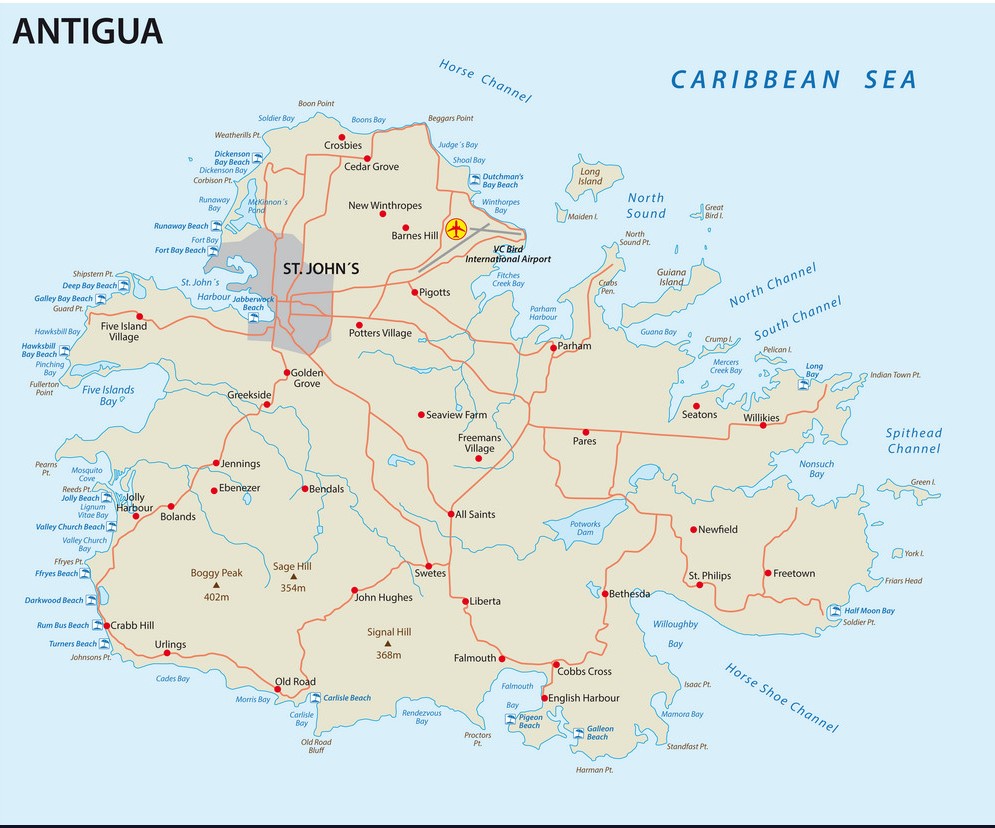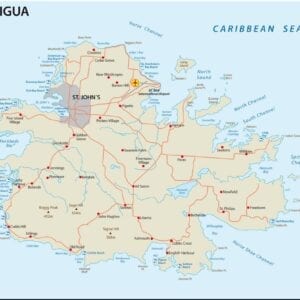Antigua General Tour

Manual Payment Steps:
Cost: U.S. Currency
Adult: Please check prices in the product description below
Child: Please check prices in the product description below
-
Private Tour Services are available and we offer an installment plan for any surcharges after discounts or promotions have been deducted. Payment in full is always welcomed.
Select Excursion | Calculate | Scan QR -Code | Pay & Send Requested Information Below
Use our QR - Code to process transactions for each island; add all adult and children costs, *subtract 10% off total for groups of 7 or more. In your corresponding email stipulate:
Name of lead traveler:
Cell Number of lead traveler on excursion day: ___.___._____
Emergency Number and name of someone not on tour:
Name Island: ________
Excursion Type: ________
Adults: ______ Child: _______
Date:________ Time: ________
Name of Villa or Cruise Ship: ________
Special Requests: ________
Customer Service
340.642.4343
CaribbeanHIStoricalTOURS@gmail.com
Description
Antigua General Tour:
2-2.5 hours
This superb tour begins with a drive through the peoples market complex and the villages named after biblical saints to arrive at a befitting church named St. Barnabas, which is over 300 years old, the adventure continues as we observe the beautiful natural landscape leading up to the first British Port of entry: Falmouth Harbour, in 1632. National Park facilities at Shirley’s Heights, views Guadeloupe, Dominica, and Nelson Dockyard below. After we descend on Nelson’s Dockyard for a walk through the 300 plus year British colonial post we drive to Devils Bridge and Indian Village National Park for an opportunity to swim (optional).
Morning Tour
9:00 AM (on this tour schedule you can swim (optional) from 11:30-1:30 +/- have lunch and be back to your ship or locale by 2:00 – 2:30 PM)
Afternoon Tour
12:00 PM (on this tour schedule you can swim (optional) from 2:30 +/- have a late swim or lunch until 3:30 and be back to your ship or locale by 4:00 -15 PM.
Adults– $75.00
Children (13 years and under) $55.00
Antigua Locater
Antigua: Named in honor of Santa Maria de la Antigua Church in Spain. Columbus is
credited with naming the island.
Size: 108 sq ml
Located: 17 degrees north, 61 degrees west
Capital: St. John’s
Population: 82,786
Highest Point: Boggy Peak (1,358 ft.)
Annual Rainfall Average: 43.26 inches (c 1889: 73.59”)
National Flower:
National Bird:
Language: English
Religions: Anglican, Catholicism, Protestant, other
Government: Prime Minister, Governor General, Senate and House of Representatives.
Economy: Tourism and service based economy with minimal manufacturing and
agriculture.
Local and National Holidays
Notes: Antiguans are known for their congeniality and intelligence. They are known to be.
Antigua Historical synopsis
With the exception of Haiti where they massacred the French for their freedom in 1804, Antiguans were the first to receive their freedom from their European empirical enslavers through a deliberate gradual process culminating on August 1, 1834.
This glorious island named Antigua is not too hot and not too dry, widely known as “Wadadli;” a corruption of the original name: waladli. Waladly is the pre columbian name given by the original African inhabitants. This widely esoteric historical/national/cultural fact began with a local calypsonian incorrectly pronouncing the name in his popular calypso song.
This island has a long history like most Caribbean islands. This island’s history has been carbon dated to before 2400 B.C. and had “Indians” (Africans) inhabiting the island as late as the 1600’s who were being enslaved by the encroaching Europeans.
Antigua was populated by many “Indians” who loved the land, that loved them back. It was a great provider before it was deforested for logging and subsequent plantation slavery. One of these tribes probably introduced the Black Pine pineapple which is the sweetest pineapple in the world today. As a sustainable habitat for humans it was inhabited by over 40 different tribes – a provider. It was an easy island to access for the Indians because of its 365 sandy beaches.
During the Colonial Period it was very productive as a sugar cane producer. Antigua has received its share of visitors and was saturated with 175 sugar mills at the climax of its production. Antigua had a very high ratio of production despite its relative small size. So productive that it rivaled much bigger islands such as Jamaica, Cuba, and Santo Domingo (Saint Dominique).
Antigua is still providing to the approximately 72,000 inhabitants that live there. An independent democracy that has banned capital punishment. Due to the high literacy rate and value placed on education, the island will maintain many of its traditions and growth. The culture is survived by the people in their traditional foods, schools and social cultural celebrations. The food is endemic to Africa however watered down and sometimes modified through the centuries due to separation in the Caribbean, assimilation and forced slavery.
Being a British commonwealth for so many years (300), Christianity is the main road of spiritual consciousness that binds the people and leads many of them to the Anglican/Episcopalian religion and churches on the island.
Antigua was predominantly colonized uninterruptedly by Great Britain and avoided a lot of war and other military dramas that many other islands saw partly due to its geographical position and military use. In 1666 when France having an interest here burnt down the fields and destroyed much of the infrastructure while at war with England it set back the island and its progression was stalled. It was left to be rebuilt, and so it was. Many fortresses were built on the island to prepare it as a British naval base for many years, many fortresses were built but remained unused because of Antigua’s peaceful relations with other neighboring colonies.
One of the many fortresses was located south in English Harbour. It was named Nelson’s Dockyard after the great Admiral Lord Nelson who served there for a few years between 1784 –1787 to ensure trade regulations. This fortress was established like so many others to protect the infrastructure and economy that was based on the African Slave Trade, agricultural cash crop production, and export. The many fortresses were probably a very big deterrent to prevent attacks and are what helped to maintain the peace from external forces, but the torture of the Africans continued regardless to whose turn it is to supervise and enforce the status quo, while in their relative peace. So the “great” Lord Nelson was probably like so many other military men of his time, before and after: patriotic, indifferent to slavery, and more concerned with their own existence and family.
While the island prospered in their relative peace externally and had a stable government, there were fires (set by the slaves), revolts and wars that were fought against the white man for freedom internally. The slaves also used slowdowns in the fields as a tactic to rebel against their treatment and conditions. In the relative peace the Brits were also beneficiaries of strong ocean currents surrounding Antigua that pulled many foreign ships into their harbour to be raided of its loot, crop, merchandise, or food. This was a common practice in islands that benefited from this type of natural occurrence. This practice bordered on piracy.
The stability allowed the island to produce much sugar cane in the days of slavery and the many sugar mills bears testimony to that success. Antigua also produced tobacco and cotton. Cotton was not as big an industry as sugar cane and all of its by products but became a larger industry with the invention of the Cotton Gin Machine. This machine was invented by an African, whose idea was stolen by his slave master. The theft of a slave’s intellectual property or invention was a common practice in the days during and after slavery. Slavery surged all over the world after the invention of the machine which revolutionized the process of taking out seeds from the cotton bulbs. Its presence reversed much progress and freedoms earlier received from slavery.
Subsequently after slavery and entering the modern era, the impoverished reality of the descendants of slaves sets in after the wealth gained by the English and other Europeans as well as Americans who used the Africans in an industry of trade and free labor to build up their own country left: no foundation, leadership, wealth or real industry. The poverty years of the 1930’s through 60’s saw great migrations of Antiguans to other islands in the Caribbean such as St. Thomas United States Virgin Islands for work. The challenge in moving to another island with your family to start a-new was made easier by the need to survive, and the already brave and transient nature of the slave and Slave Trade respectively; moving people from one place to another involuntarily as chattel.
To relocate seamlessly was made more stressful by sometimes unwelcoming locals who thought that migrants would steal their jobs and strain government. For example Antiguans in St. Thomas were called: Garots, Aliens and other derogatory names to their embarrassment. Only through their sheer determination and the invaluable skills that they brought with them to the new areas of settlement were they able to progress and develop at a rate in line with their former home communities. In many instances these immigrants provided much needed services, and modernized their new home’s infrastructure and raised the level of education and services in government.
Today in Antigua the people enjoy a very high literacy rate, a strong economy supported by tourism and a still stable government. They are considered as one of the happiest people in the world.
Antigua became independent in 1981 and has not looked back since with Barbuda and Redonda at her side they walked down the ‘isle’ briskly to independence. Independent for many years under the Bird family’s ruler-ship, who guided the island out of its virtual poverty and safely into the modern world. Some will say “while exploiting the island, pursuing conflict of interest businesses privately and seeking opportunities in the island’s economy,” but definitely not without the major scandals the island has seen and survived over the years.
Antigua has a functioning democracy whose government is ran by a Prime Minister who is elected every four years and acts as the head of state, he or she is supported by a Governor General, the Senate and the House of Representatives. The two main political parties are the Antigua Labour Party and the United Progressive Party. The various parties compete for seats in the House of Representatives.
Antigua’s people today are multinational and many are world famous making household names for themselves in science, sports, beauty and other diverse fields all over the world.
Antigua Historical Timeline
2400 B.C. Ceramic tribes lived in Antigua
1775 B.C. 10 A.D. Ciboney Tribes
5 B.C. – 1100 A.D. Arawaks
1632: English rule started.
1666: The French took over the island while at brutal war with Great Britain and destroyed vast majorities of agricultural crops to interfere with Great Britain’s economy before the island was officially ceded to England by treaty.
1667: A treaty was signed to give control and ownership of Antigua to Great Britain.
1671- 1704: A real foundation was laid out by the English settlers culminating in a major
fortress; Fort Berkeley being built.
1784-1787: Lord Nelson was stationed in English Harbour.
1787: Clarence House was completed for Her Royal Highness Prince William Henry. He
later became the Duke of Clarence and later King William and commonly called
“Sailor King.”
1788: Admirals Inn was built and was used as the engineers offices.
1803: An attempt by the French to over throw the English was intercepted and it was a
bold effort 13 schooners and about 700 men.
1805: Lord Nelson dies.
1820: Nelson Dockyard and the stone wharf was reconstructed to exacting details, today
it is one of the best stops on any island tour of Antigua with Caribbean Historical
Tours.
1834: Slavery was “abolished” on August 1st.
1860’s: Redonda was annexed for the mining of Phosphates.
1918: Riots occurred in Antigua this could be a sign of the beginning of the Africans
reorganization and realization of their economic independence and political
movements to achieve these goals.
1943:? HURRICANE
1949: Antigua Labor Party started to run Antigua’s government under Vere Bird.
1951: Sir Kenneth Blackburne Governor of the Leeward Islands, established the
society of the Friends of English Harbour. The funds raised by this
organization was used to refurbish Nelsons Dockyard.
1960: Vere Cornwall Bird became Chief Minister. He later became the first Prime
Minister under their independence.
1971- 1976: Bird did not serve as Chief Minister.
1980: Barbuda received more autonomy through a newly appointed Council to address
the governmental affairs of that sister island and also gained a seat in Parliament.
1981: Antigua became an independent state on November 1st. It is also included in a
Common Wealth of Nations. Vere C. Bird is elected to office as the First Prime
minister under the Antiguan Labor Party.
1982: The University of Health and Sciences of Antigua was established.
1994: Lester Bird was elected as Prime Minister continuing the Bird legacy.
2004: March 23rd saw the end to a long monarchy in Antigua when Lester Bird lost the
office of Prime Minister to the very popular and loved Baldwin Spencer. The
American University of Antigua College of Medicine was established.




